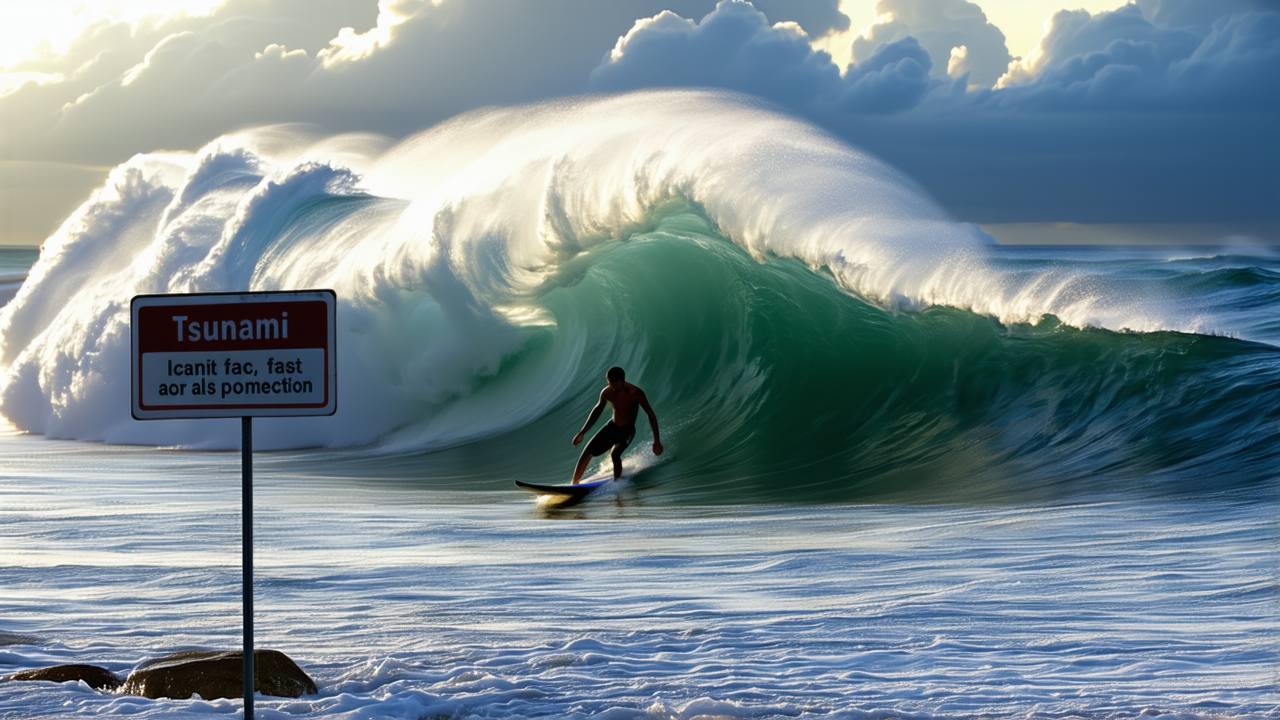New Zealanders Warned Even Small Tsunamis Pose Risks to People in Water, Nearby Shorelines
New Zealanders Warned Even Small Tsunamis Pose Risks to People in Water, Nearby Shorelines
A person has been spotted surfing at Scarborough Beach despite a national tsunami warning.
GeoNet, New Zealand’s leading geological hazard monitoring organization, has issued a stern warning to all New Zealanders: even small tsunamis can be extremely dangerous, particularly for those in or near the water. This message comes as a magnitude 8.8 earthquake struck off the coast of Russia’s Far Eastern Kamchatka region, triggering tsunami warnings across the Pacific and putting New Zealand’s entire coastline on alert.
Tsunamis, according to GeoNet, are not just the towering waves that people often imagine. Instead, they behave more like fast-flowing tides, capable of carrying large amounts of water and debris both in and out of the ocean, and generating powerful currents in the process.
“While a small tsunami is unlikely to sweep over people and structures, they still pose serious risks to people in the water or on small boats,” GeoNet stated in a recent advisory.
Even a 10- to 50-centimeter tsunami might not seem alarming at first glance, but it can still move a significant amount of water and debris. “Surges come in over several minutes and then recede just as fast for a similar time period, often acting more like a very rapid tide than an ocean wave,” the organization explained.
GeoNet compared being in a 10- to 50-centimeter tsunami to wading through a fast-flowing river. “That’s where the advisory to stay clear of the ocean during even a small tsunami comes from. It might only be ankle deep at the beach, but you could find yourself swept out to sea by the force of the currents if you are in the water or a small boat.”
Impacts from the tsunami were felt across the Pacific. In Russia’s Severo-Kurilsk, a coastal area on the Kuril Islands, the tsunami swept away buildings, prompting a state of emergency. In Japan, tsunami waves reached Hokkaido, leading to the evacuation of more than two million people, train suspensions, and heightened concerns near the Fukushima nuclear plant.
Tsunami warnings were also issued in parts of Russia, Japan, Ecuador, and the northwestern Hawaiian islands, with waves of more than 3 meters possible in some areas. Authorities in the Philippines and California also issued alerts, urging people to stay away from the coast.
Compounding the situation, the Klyuchevskoy volcano on the Kamchatka peninsula in Russia’s far east erupted following the powerful earthquake, according to reports from the Russian state news agency RIA.
As New Zealanders continue to monitor the situation, the message is clear: do not underestimate the power of even small tsunamis. Staying informed and heeding warnings can be the difference between safety and danger.
